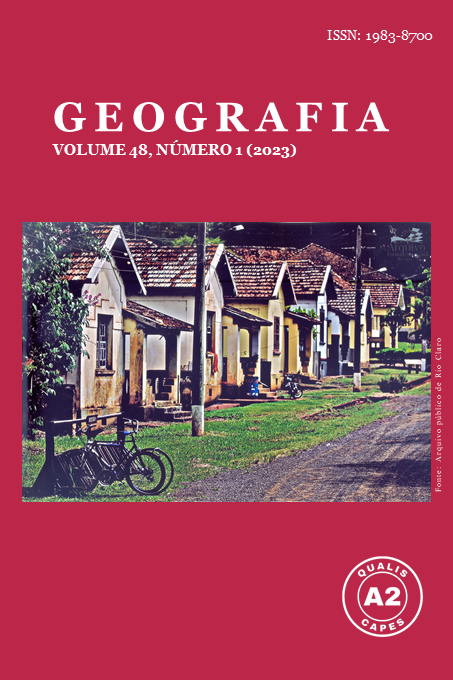GARDEN-CITY AND ITS SOCIO-SPATIAL CONTRADICTIONS IN THE CITY OF CAMPINAS
DOI:
https://doi.org/10.5016/geografia.v48i1.16358Abstract
The Nova Campinas, Vila Iza and Chácara da Barra neighborhoods, located in the city of Campinas, SP, were designed by engineer and urban planner Jorge de Macedo Vieira, between the years 1945 and 1950. The subdivisions followed the neighborhood-garden urban model and were created during the implementation of the Urban Improvement Plan in the city. This article critically analyzes the implantation of these neighborhoods, aiming to reveal the introduction of the Cidade-Jardim concept in the city of Campinas. For this, we consider the socio-spatial articulations and contradictions between the garden city ideals practiced by the project engineer, the precepts established in the legislation and by the urban planning plan, then in force, and the interests of the real estate agents of the subdivisions. The article presents the evolution of neighborhoods and their current conditions in the urban fabric of the city, in order to analyze how the socio-spatial dynamics changed the manifestation of the neighborhood-garden morphology in Campinas.
Downloads
Published
Issue
Section
License
Copyright (c) 2023 GEOGRAFIA

This work is licensed under a Creative Commons Attribution 4.0 International License.
The authors maintain the copyright and grant GEOGRAFIA the right of first publication, with the articles simultaneously licensed under the Creative Commons BY 4.0 License, which allows sharing and adapting the articles for any purpose, as long as appropriate credits and provisions of image rights, privacy or moral rights. Other legal attributions can be accessed at: https://creativecommons.org/licenses/by/4.0/legalcode.en.
Geography, Rio Claro, SP, Brazil - eISSN 1983-8700 is licensed under the Creative Commons BY 4.0 License.





